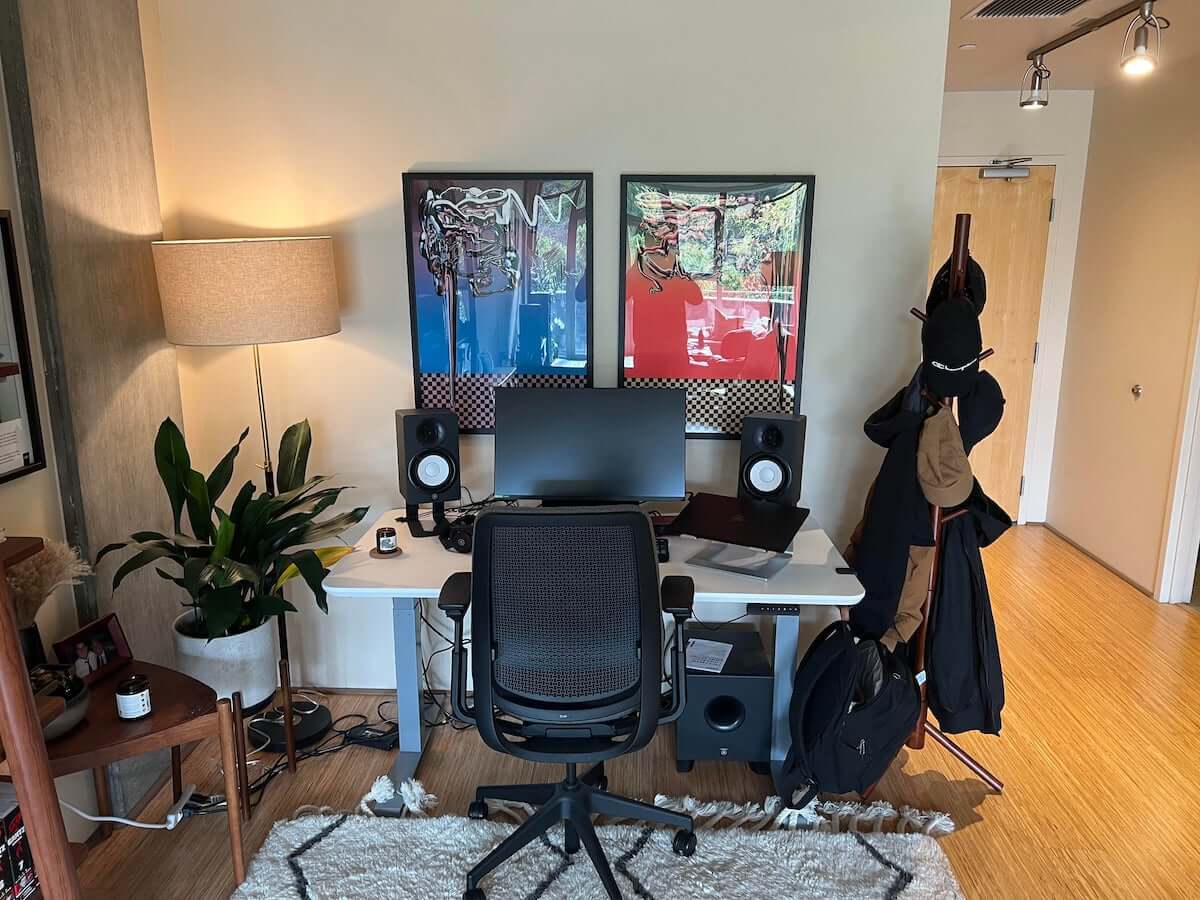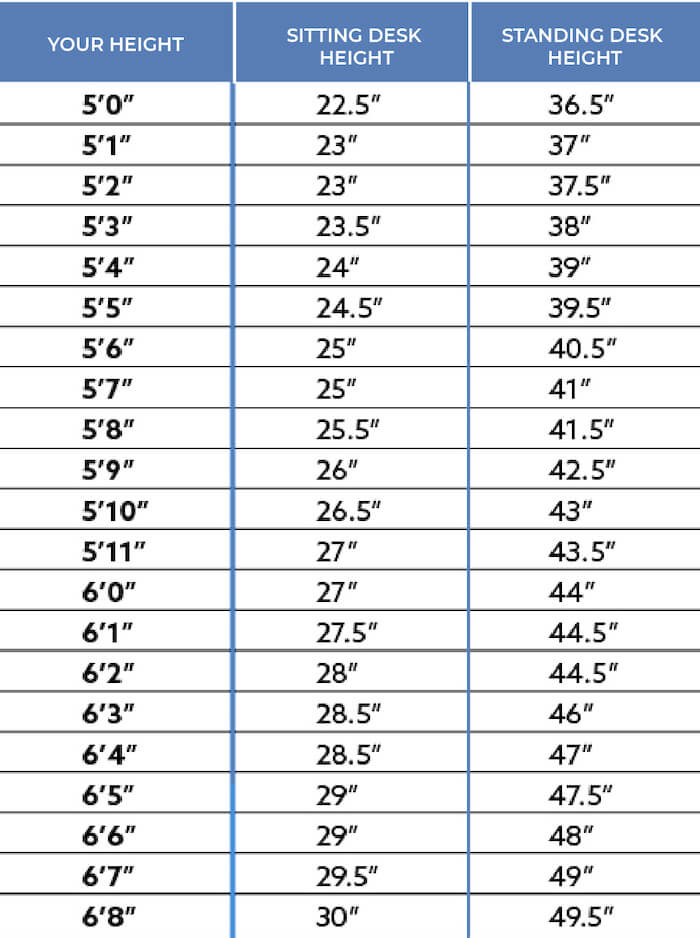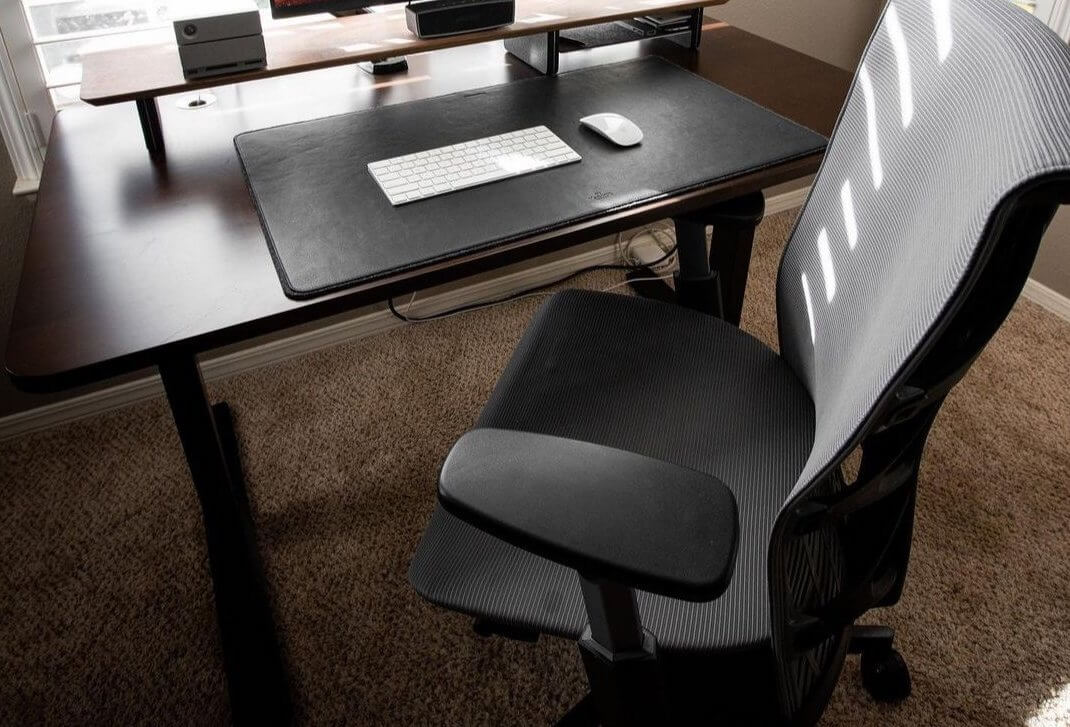When it comes to standing desks, height is an important consideration. You want to make sure that the desk is tall enough for you to comfortably stand while working.
To determine the sitting and standing height desk, measure the distance from your chair seat to the floor. This will give you the ideal location for your keyboard and mouse. You want to be able to keep your arms parallel to the ground when they are resting on the keyboard. If they are too low, you can raise the desk by adding a riser. If they are too high, you can lower the desk by removing them.
The height of a standing desk should be based on your height. Specifically, it should be at elbow height. This means measuring the depth from your floor to just below where you make a 90-degree turn with your arms extended out in front of yourself until this point is as low down on whatever surface it may reside upon but not lower than waist level!
An average standard desk is 29 inches tall ( 73.5 cm), as the average height of a person in the U.S. is about 5’9″ (175 cm). This would mean that the average person’s reach would be too short to comfortably use a desk at this height. However, if you are shorter than average, a standard-height desk may be just right for you. Conversely, if you are taller than average, you may need to adjust the height of your standing desk accordingly.
Steps to determine the height standing desk according to your height
1. Measure your height in inches.
2. Divide your height by 2.54 to get the height in centimeters.
3. Add 12 cm to that number. That is the height of your standing desk in centimeters (rounded up).
4. If you want to convert the height to inches, multiply the height by 2.54.
So for example, if you are 72 inches tall (6 feet), your desk height should be about 83 cm (32.7 inches). Remember that you may need to adjust the height depending on how high your chair is and how much of a bend you want in your knees. If you find that the desk is too high or low, you can always make adjustments using the included screws.
However, there are some exceptions to this rule. If you are very short or very tall, you may need to adjust the height of your desk accordingly. If you are shorter than 120 cm, then you should lower the desk by 6 cm so that it is at elbow height. If you are taller than 180 cm, then you should raise the desk by 6 cm so that it is at elbow height.
This guide will help ensure that you have comfortable and safe work. Here are some general guidelines:
- For under 5’4″, a desk height of ~ 28-30 inches
- For between 5’4″ and 5’10”, a desk height of ~ 30-32 inches
- For over 5’10”, a desk height of ~ 32-34 inches
What are the benefits of standing?
When you sit all day, your muscles get lazy and your stomach gets bloated. You’re also at risk for heart disease, neck pain, and poor posture. Sitting all day has some serious negative health effects. All of these problems can be avoided by standing up more often.
Besides, it can help lose weight, burn more calories, improves your mood, strengthens your back and legs, avoid the negative health effects of sitting all day. When you’re standing, you’re constantly moving, burning more calories, and keeping your blood flowing. This can help you lose weight and improve your mood. It also helps to strengthen your back and legs.
A recent study published in the journal Diabetes Care found that after just two weeks of using a standing desk, participants saw a reduction in their blood sugar levels. While more research is needed to determine the long-term effects of using a standing desk on blood sugar levels, this initial study provides another compelling reason to make the switch.
So if you’re looking for an excuse to get yourself a standing desk, now you have one! With so many benefits, it’s hard to say no. Give it a try and see for yourself how a standing desk can improve your health and wellbeing.
Is it better to stand or sit when working?
That’s a difficult question to answer because there are benefits to both standing and sitting. Ultimately, it comes down to what works best for you. Some people find that they’re more productive when they stand, while others prefer to sit. The important thing is to move around and take breaks often. Standing for too long can be just as bad as sitting all day, so be sure to mix things up!
The distance from the face to screen monitor
There is no one-size-fits-all answer to this question, as the distance will vary depending on your height and the size of your screen. However, a good rule of thumb is to place the monitor so that it is at eye level when you are standing. This will help to avoid straining your neck.
Be careful of the neck, head, wrist
Just as with sitting, it is important to be careful when using a standing desk. You don’t want to strain your neck, head, or wrists. Here are a few tips to help you stay safe:
• Make sure your desk is the correct height for your height.
• Use a monitor that is at eye level when you are standing.
• Take breaks often to move around and stretch.
• Wear comfortable shoes.
• Avoid holding your body in the same position for too long.
• Keep your wrists in a neutral position. This means that your wrists should be straight, not bent up or down.
• Consider using a laptop stand or riser. This helps the laptop at a comfortable height and reduce the strain on your neck and wrists.
• Using an anti-fatigue mat can help reduce the fatigue you may feel after standing for extended periods of time. They are usually made from foam or rubber and can be found at most office supply stores.
So, what are you waiting for? Get up and get moving! A standing desk can help you improve your health and wellbeing, and it may even help you become more productive. Give it a try today and see for yourself how great it can be.











